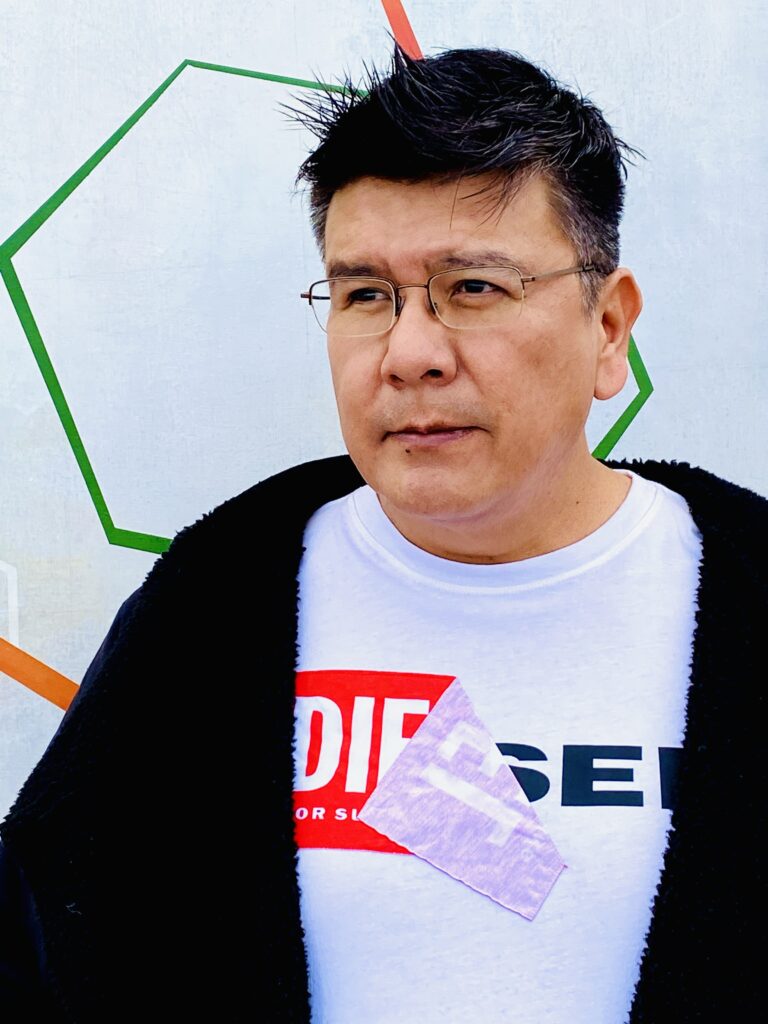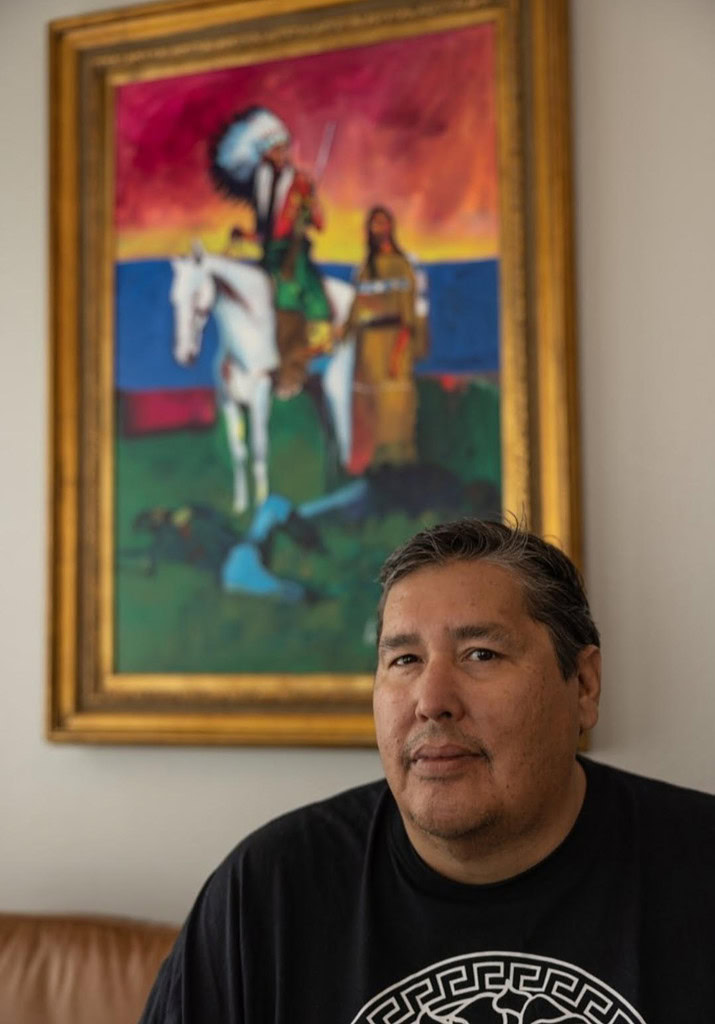
When Al Hubbard crosses the Colorado state line, an internal shift happens. It’s a comforting feeling, like reuniting with a close friend.
“Something is in our memory, our DNA, where we just know our sense of place,” says the Northern Arapaho-Navajo artist. “It starts to go off like an alarm, saying, ‘Oh, you’re close to home.’”
Submitting art on the theme of “reconnection” to the 2024 Homelands exhibition, the annual group show presented by the Boulder-based Indigenous art collective Creative Nations, came naturally to Hubbard. He let the process flow, less worried about the end product than its arrival into the world.

Hubbard joins five other Indigenous artists from the Ute, Cheyenne and Arapaho tribes — whose ancestral lands comprise the region known today as Boulder — to display work reflecting their experiences and the stories of their ancestors. Homelands: Reconnection opened Sept. 13 and will run until Nov. 3 in the Sacred Space at the Dairy Arts Center, kicking off a full slate of fall programming for Creative Nations.
Brent Learned, a Cheyenne-Arapaho artist from Oklahoma City, is presenting three pieces in Homelands showcasing his combination of abstract landscape painting and historical storytelling.
Learned aims to educate people through his art about important historical events that might get brushed over in other contexts, such as the Sand Creek Massacre that killed 230 Cheyenne-Arapaho people in southeastern Colorado. Learned has given talks about the massacre to Colorado audiences who had no knowledge of the event despite living in the state where it happened.
“It’s not a burden to try to tell the story of your heritage,” Learned says. “For one, a lot of that heritage is dying off with the elders. By painting, you’re a historian of your time, and not only that, but when you’re paying tribute to your tribe, you’re educating dominant society about them.”
‘What it means to be an Arapaho’
Hubbard says his work is a tribute to the traditions and culture of the Arapaho Nation. But he also hopes his work shows other young Indigenous artists that they can, and should, create art that speaks to them without worrying about what other audiences will think.
“I would like to inspire the youth to portray their current life and how that’s connected to our historical past,” Hubbard says. “We don’t have to paint a certain way. We can develop our own way of communicating our stories and memories through art or architecture or storytelling or writing or dance or song.”
Hubbard’s multimedia works feature “ledger art,” a traditional technique of painting stories or events on paper or cloth, referencing the ledgers used by white settlers to take inventory of the Great Plains in the 19th century. The artist says it underscores how Native people — whose many diverse cultures largely do not include a concept of ownership over natural resources — get treated by cultural institutions as artifacts or commodities.
Some of the themes of his art can be uncomfortable, Hubbard says, but it’s meant to be evocative and thought-provoking.
“Especially as Native artists, we have to portray and infuse our art, whether that’s painting or sculpture, with our historical points of view and stating facts that aren’t really talked about in today’s world,” Hubbard says. “I would hope that people view my work as questionable, and dig a little deeper on what it means to be an Arapaho.”
‘We’re going past land acknowledgment’
For Homelands curator Bruce Cook (Haida/Arapaho), the annual event feels like a renewed proclamation that Indigenous people retain a vibrant, thriving community in Colorado.

But he also hopes exhibition visitors take further action to educate themselves, engage with Native culture and recognize the ways their lives have been impacted by Indigenous people and their history.
“We’re going past land acknowledgment,” Cook says. “It’s time to figure out how we can work together in a meaningful manner to move forward.”
Creative Nations is currently housed in the Dairy, but in the process of establishing its own 501(c)(3) nonprofit, says managing director Marty Strenczewilk (Ojibwe). He says the move will allow the collective more freedom to qualify for grants, build a solid revenue base, collaborate with other organizations and host additional programs.
“We have to catch up to decades and decades of history and infrastructure that many other organizations have, but [the Dairy] always knew the goal was to shepherd us off on our own,” Strenczewilk says. “Having these years under the Dairy has been very helpful, for security, for learning, for setting up, etcetera, but it’s also restrictive.”
The Sacred Space gallery at the Dairy will continue to host exhibitions like Homelands, and the nonprofit arts center will also support Creative Nations’ operations and revenue efforts even after the transition.
Whatever the future holds for the collective, Strenczewilk says they will remain dedicated to supporting all Indigenous artists, from professional creatives to young people looking for a path into the field. The aim is to prioritize everyone’s voices equally and create a community atmosphere that serves everyone, Native and non-Native alike.
“That’s so incredibly valuable, because otherwise we get leaned on a lot to help change narratives,” Strenczewilk says. “There’s some onus on the person viewing the art to do a little on their own: ‘Maybe I’m going to go read a little more. I’m going to look into my local reservation, or attend a powwow.’ These are places you can go, and that curiosity to me is so powerful.”
ON VIEW: Homelands: Reconnection. Noon-6 p.m. through Nov. 3, Dairy Arts Center - Sacred Space, 2590 Walnut St. Free
